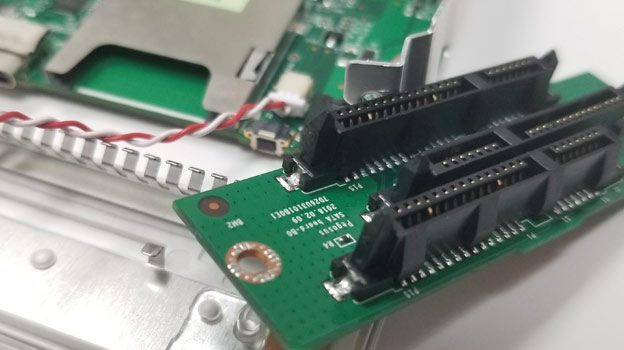
Some time ago, I published a blog post where I explained that Lacie is not really a hard drive manufacturing company. I also pointed out that nothing specific justifies the high cost of their products. Recently, things have taken a rather strange curveball with Lacie.
Let me give you some background for context.
Lacie became part of Seagate in 2014. Before that, Lacie sold portable external hard drives. Or, to be more accurate, Lacie branded enclosures that contained hard drives inside that were from several different sources. Some of the actual hard drive brands were Hitachi, Toshiba, WD, and Seagate.
Today, when you purchase a Lacie drive, the odds are that it will have a Seagate hard drive tucked inside the Lacie-branded enclosure. That’s just the way they do things these days.
So… to stay on topic here, I need to say that this post was influenced by one of our recent data recovery cases that proved to be nothing short of a nightmare to work on. For example, there was a point during the process where we were convinced that things could not get any worse, but they did.
Here’s the story: A client brought us a simple external, durable hard drive (see photo below). Once we powered it up, we found that the enclosure was making rather odd sounds. It sounded like the noises were happening in tandem. Double-clicking probably describes it better.

So, we opened the enclosure and discovered two drives (Rosewood series 2TB) sitting on top of each other. Understandably, that may not sound so out of the ordinary to you at this point, but as they say… it gets better.
The enclosure was running RAID configuration to make up 4TB of free space. In other words, it was running a RAID 0 configuration (to learn more about the different types of RAID configurations, and their differences, click HERE).
Admittedly, this story may still sound okay so far. But this is the point where I explain why this was so ridiculous.
Three things soon became clear:
Lacie claim they manufacture very durable drives. But they contain Rosewood series drives inside and Rosewood happens to be at the low end of the scale within the drive industry. In other words, Rosewood is the worst brand of drives available.
Rather than putting a single 4TB drive inside, for some reason, the smart ones on the assembly line at Lacie decided to stuff two 2TB drives inside the enclosure and left it to run probably the most unreliable of the RAID configurations. You may ask, is there a difference between running RAID 0 with two drives compared to having just a single drive? Not really, so no pros here at all.
When or if fragmentation and file corruption occur, recovering data from RAID 0 is – in the majority of recovery cases – impossible. This is if we are talking about 100-percent recovery in the complete format.
As it turns out, this is exactly what we were up against with this customer’s drive. Both of the drives were damaged and there was severe file system fragmentation. The result was that the client lost over 40 percent of their stored data. There was no way to recover that loss with today’s technology.
It is not easy trying to understand why Lacie (okay, really Seagate) is making these types of decisions in the manufacturing process. There is nothing durable about these drives. They are unreliable and just horrible when you are looking at them for data storage.
Naturally, the answers to this mystery will forever be hidden behind the doors to the Lacie (I mean, Seagate) vault of knowledge.
